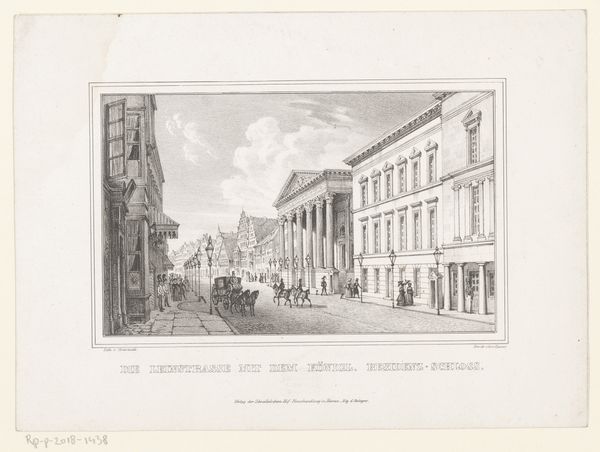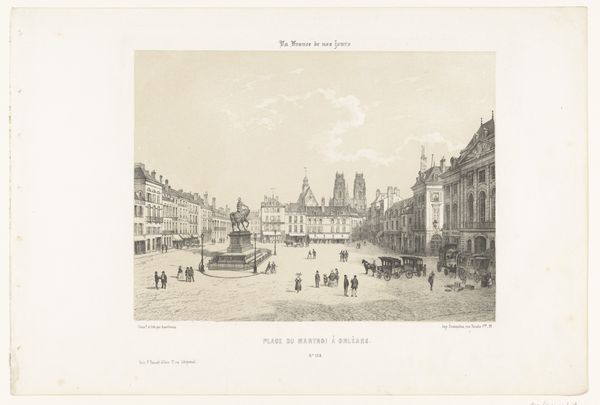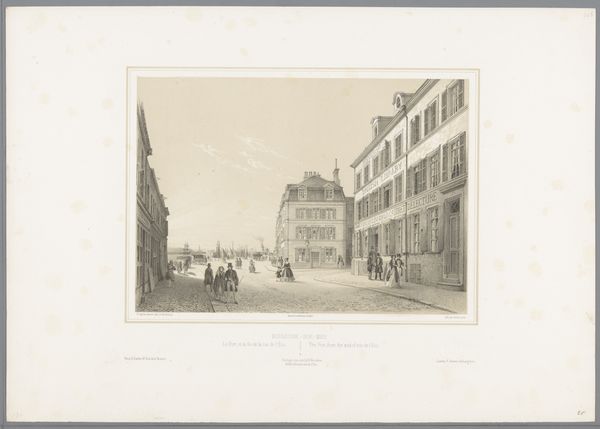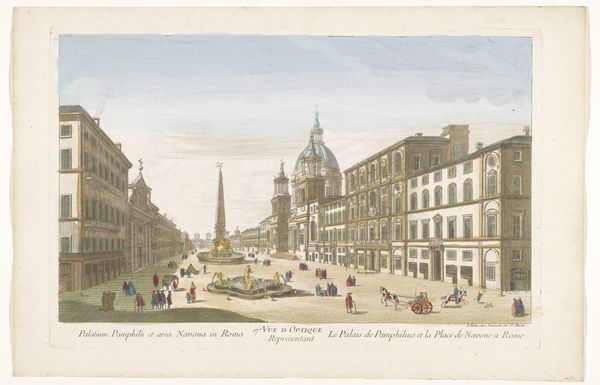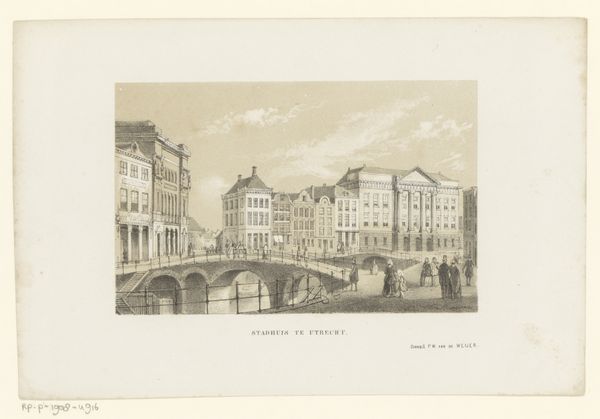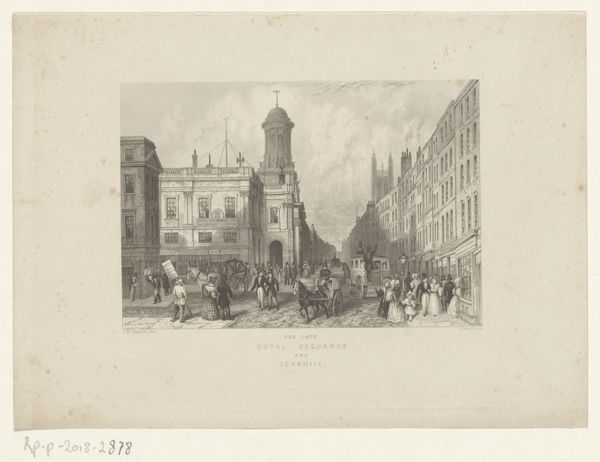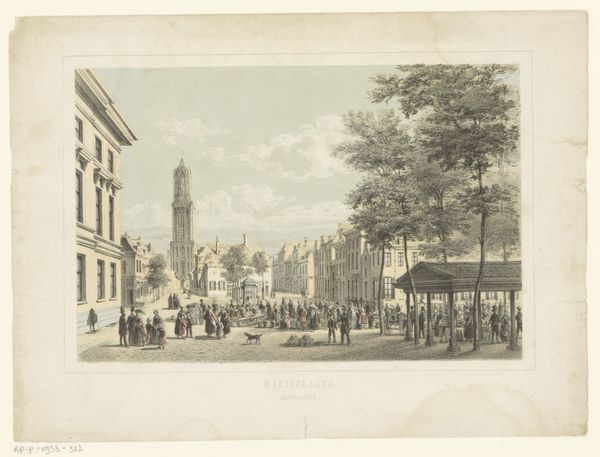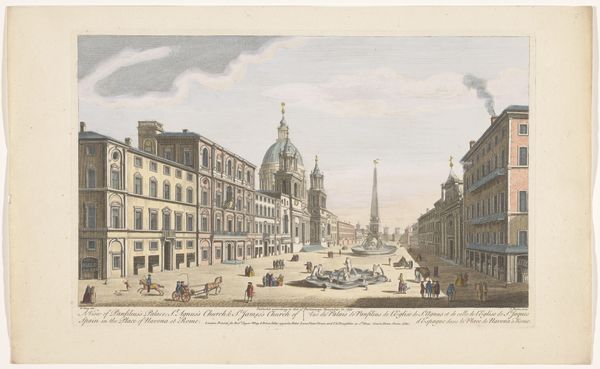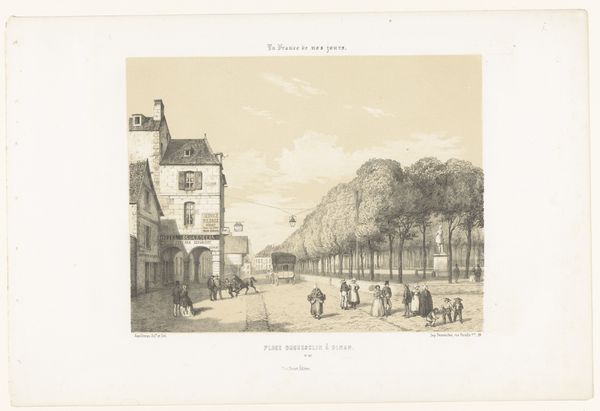
Zicht op een trein en het Palais de la Bourse in Nantes 1863 - 1864
0:00
0:00
print, engraving
#
16_19th-century
# print
#
old engraving style
#
cityscape
#
genre-painting
#
engraving
#
realism
Dimensions: height 291 mm, width 434 mm
Copyright: Rijks Museum: Open Domain
Editor: This is “Zicht op een trein en het Palais de la Bourse in Nantes,” or "View of a train and the Palais de la Bourse in Nantes," made by Léon Auguste Asselineau between 1863 and 1864. It’s an engraving. The scene feels so structured and deliberate, but there's an undeniable dynamism with the train cutting through the space. How do you interpret the balance between stillness and movement in this print? Curator: The effectiveness of the print lies in the contrast and interplay of formal elements. Consider the horizontal lines of the train tracks, the rigid verticality of the Palais de la Bourse’s columns, and the softer, diagonal lines implied by the crowd’s movement. How do these shapes structure the composition and guide your eye? Editor: I see it now. The tracks draw me straight to the center and the Palais, while the crowd’s slight curve gently brings me back. What about the light? It seems fairly even. Curator: Precisely. Note how the consistent lighting eliminates strong shadows, flattening the scene and emphasizing the surface. This focus on the picture plane, rather than depth, draws attention to the meticulous detail of the engraving itself. The technique foregrounds the materiality of the work. Editor: So, the subject matter is less important than how it's rendered? Curator: It's not about diminishing the subject matter, but about acknowledging how the formal qualities – the lines, shapes, light, and the printmaking process itself – contribute to the artwork's meaning. The regularity creates an aesthetic experience beyond the depicted scene. Editor: That makes a lot of sense. I was so caught up in the scene; I didn’t focus on the execution. Curator: Paying attention to formal structures reveals the underlying strategies employed by the artist to engage the viewer. Hopefully, that’s food for thought when considering other works of art as well.
Comments
No comments
Be the first to comment and join the conversation on the ultimate creative platform.



